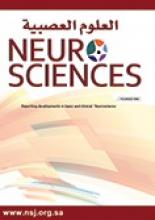Abstract
OBJECTIVE: To investigate the involvement of opioid receptors in antinociception induced by different aerobic exercise protocols in rats.
METHODS: This experimental study, conducted in the Federal University of Minas Gerais, Belo Horizonte, Brazil from November 2011 to May 2012, included 60 female Wistar rats, divided into 10 groups of 6 animals per group. The rats were subjected to different aerobic exercise protocols: acute, cardiac stress, eccentric, and training. The nociceptive threshold was measured by the paw-withdrawal test. To investigate the involvement of the endogenous opioids system, the non-selective opioid receptor antagonist naloxone (5 mg/kg) was administered subcutaneously before the beginning of the exercise.
RESULTS: All exercise protocols increased the nociceptive threshold for 15 minutes. The naloxone pre-treatment did not alter the antinociception induced by aerobic exercise protocols.
CONCLUSION: The endogenous opioids system did not participate in the antinociceptive effect produced by the aerobic exercise protocols.
- Copyright: © Neurosciences
Neurosciences is an Open Access journal and articles published are distributed under the terms of the Creative Commons Attribution-NonCommercial License (CC BY-NC). Readers may copy, distribute, and display the work for non-commercial purposes with the proper citation of the original work.






